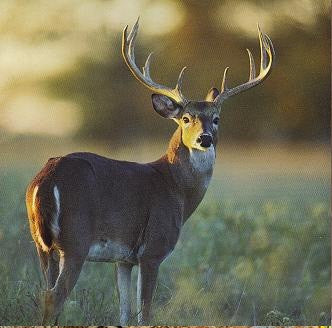If it’s difficult for the king of the jungle to hunt a deer, then just imagine the challenge a bowhunter has to face to down one. These animals are not at all your cup of tea, they are always on the alert, they’re fast, and incredibly slick. Targeting one is in itself a victory and shooting one is another. But we all know that nothing can stop a deer from running, not even an arrow’s wound to the heart or lung. So the overall victory is in tracking the deer’s whereabouts and dragging it out of the woods.

Here are some tips to ease this task.
Patience my fellow hunters, patience
After releasing the arrow the deer will bolt and disappear from sight in a jiffy. At that very moment take a deep breath and try to set order to your adrenaline. Then carefully come down from your tree stand and fetch your arrow. If you find remnants of blood on it then it’s a confirmed hit. But still, you have to restrain yourself from going after it immediately, as for one, you can’t outran a four-legged animal, and second, if you spook it, you’ll only burden yourself with more work of locating it. So delay the scouting for about 30 minutes.
Know what part of the deer your arrow penetrated
Knowing where you hit the deer will save you loads of time and energy. And guess what, you can easily extract all the answers you need from the arrow itself. If, for instance, the blood on the broadhead is crimson red then it means that you’ve hit the heart. And with a wounded heart a deer could only go as far as 100-150 yards. And if the blood is pinkish red and has tiny air bubbles on it, then give yourself a pat in the back, because my friend, only experienced bowhunter can execute a double-lung shot. And with that hit expect to find your deer about 150 yards away from where you last saw it. And a liver-shot will leave the arrow steeped in deep dark-red blood, if so the deer will be found dead in about 200 yards.
The blood trail
Hitting one of the deer’s vital organs, such as the heart, lung, liver, ham and so on, is not just ethical but highly essential to the tracking process. If the deer is wounded elsewhere little or no blood will be available for you to trace the deer’s final destination. So practice as often as you can to make that perfect shot. And don’t just pay attention to the ground when searching for blood trails, the bushes are often known to be great guides as well.
The safest way to approach a downed deer
When you finally find your dear lying dead somewhere in the woods, take a moment or two to congratulate yourself but don’t go running to pick it up right away– it might still be alive. So the first step is to quietly walk towards your downed game, then check if the deer’s eyes are closed or open. If they’re shut then it probably is still alive, but if they’re open, the dear is dead. For the sake of safety though, poke it with a long wood a couple of times before you load it up.
Ever had a unique experience while tracking your deer? We want to know, so share, share, share!!!
 cust@legendarchery.com
cust@legendarchery.com 302 503 5767
302 503 5767 Sauk Village IL 60411
Sauk Village IL 60411


